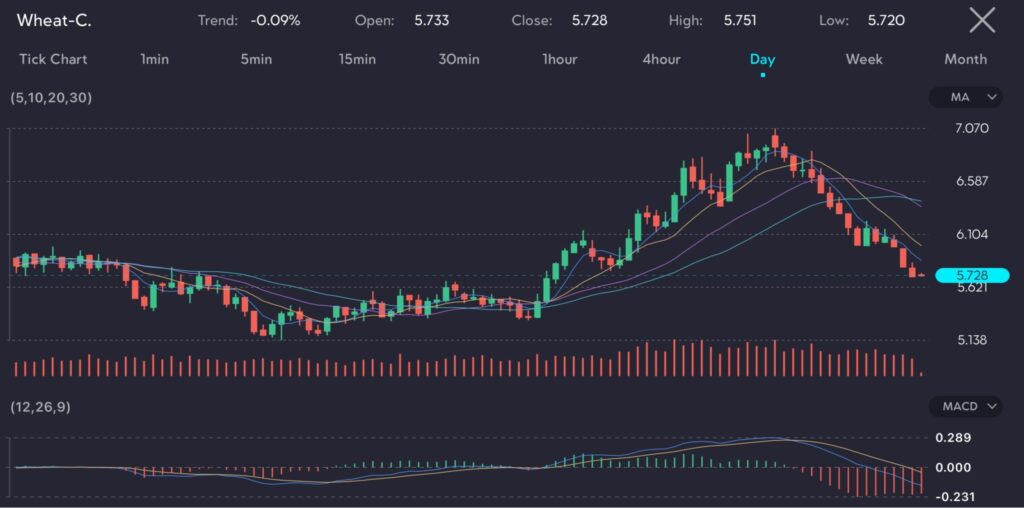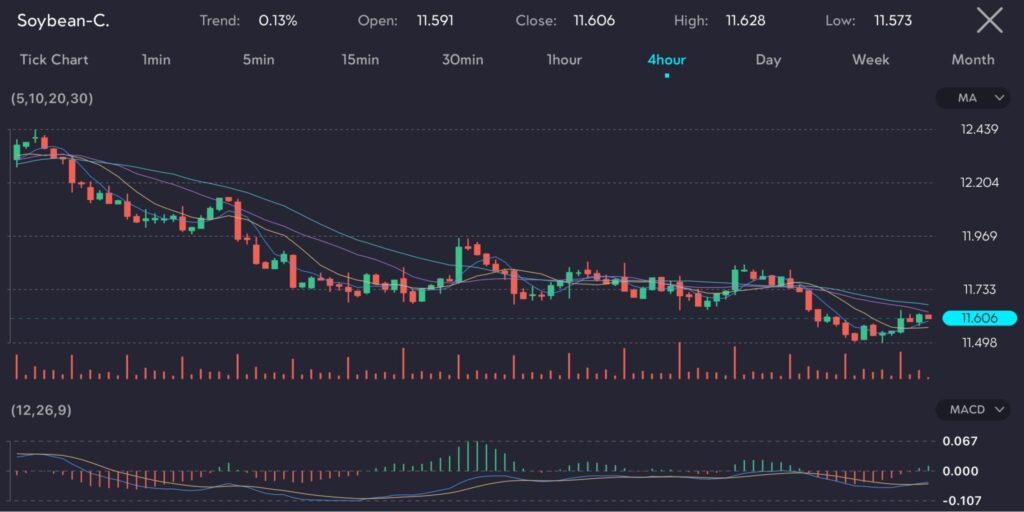Key points:
- Wheat prices dipped to a two-month low with an improved global supply outlook.
- Soybean prices also declined, reflecting easing weather concerns.
- Increased wheat production forecasts from major exporters like Russia and Argentina.
Wheat prices (Symbol: Wheat-C) fell on Thursday, slipping to the lowest level in two months as the major harvest supply in the world eased supply fears. Prices dropped to $5.73-1/2 a bushel, down around 18.8% from the highs seen last month.

Images above show the dip in wheat prices, as observed on the VT Markets app.
Global supply factors
The dip in wheat prices is largely attributed to the increased supply forecasts from key global producers. The agricultural consultancy of Russia, IKAR, raised its forecast for the wheat crop of the country to 82 million metric tons from 81.5 million tons.
Being the largest wheat exporter in the world, Russia has seen improved weather conditions stabilising its crop outlook after severe downgrades last month that had previously driven global prices up.
In Argentina, the Buenos Aires Grains Exchange revised its forecast for wheat planting upwards, citing higher wheat prices and lower input costs as motivating factors for farmers to sow more crops despite ongoing dryness in some areas.
The United States is currently seeing an influx of wheat from its harvests, contributing to the downward pressure on prices.
Weather concerns hitting the soft commodities market
Soybean also saw declines dipping to $11.60-1/4 a bushel. Although a heatwave in the US Midwest is causing some concern, agronomists suggest it should have limited impact as the plants are still in their vegetative growth stage.

Images above show the dip in wheat prices, as observed on the VT Markets app.
Market sentiment for wheat and soybean
Commodity funds were net buyers of soybean but net sellers of wheat. This reflects a cautious market sentiment as traders assess the balance between ample global supplies and the potential weather impacts on US crops.
Wheat prices are likely to remain under pressure as global supply conditions improve and weather concerns in the US moderate. Traders will continue to monitor harvest reports and weather forecasts closely.
The balance of global supply and demand will play a crucial role in price movements. Continued favorable weather conditions and stable crop forecasts from major exporters could keep prices in check, though any unexpected weather events could disrupt this balance.









